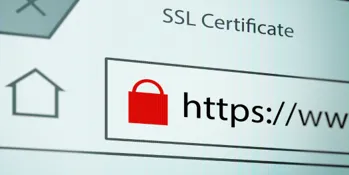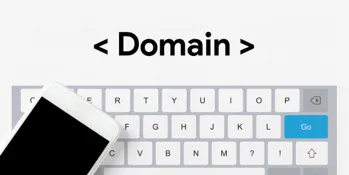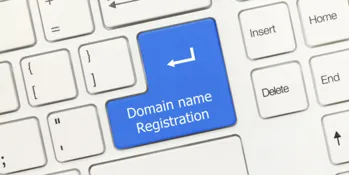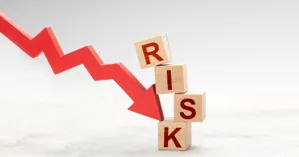- Quick Summary
- Establish Domain Price
- What is Domain Flipping?
- Benefits of Domain Flipping
- Domains that are Best to Flip
- Look for Quality Domains
- Checking a Domain’s Availability
- Domain Name Registration
- Selling the Domain
- Where to Sell Domains
- Risks and Challenges of Domain Flipping
- Tips for Success in Domain Flipping
- Conclusion

- Quick Summary
- Establish Domain Price
- What is Domain Flipping?
- Benefits of Domain Flipping
- Domains that are Best to Flip
- Look for Quality Domains
- Checking a Domain’s Availability
- Domain Name Registration
- Selling the Domain
- Where to Sell Domains
- Risks and Challenges of Domain Flipping
- Tips for Success in Domain Flipping
- Conclusion
Domain flipping can be a lucrative business. You buy domains cheaply and sell them high, making money flipping domain names an effective way to generate income online. Some people have made millions of dollars. Many have made thousands of dollars. But how do you do it? Here’s a beginner’s guide to flipping domains.
Establish Domain Price
You’ll want to do a little research before you price your domain. Check historical sales prices that are like your domain. NameBio is a good source for checking past domain name sales.
Understanding the domain value is crucial. Factors influencing domain value include memorability, keyword relevance, brandability, and the impact of domain extensions like .com. Appraising domains helps judge their right value for buying and selling, as the perception of value can change over time.
You could also join domain-related forums like NamePros and DNForum. You’ll be able to discuss pricing and flipping strategies with professional domain flippers.
Domain appraisal tools are also a way to evaluate a domain name. These give you an estimate of the domain’s price by looking at the domain’s:
- length
- wording
- SEO-friendliness
Some free domain appraisal tools are domainindex and Domain Price Check.
Once you have established what you should sell your domain for, you’ll need to develop a strategy. The two strategies include fixed and flexible pricing.
Fixed pricing eliminates negotiations. It can provide a faster transaction. Fixed pricing works well when selling domains on the marketplaces.
Flexible pricing gives you a little more control. That’s because your domain may sell for more than the reserve price. However, flexible pricing increases the length of the selling time and can be challenging.
What is Domain Flipping?

Domain flipping is when you buy and sell domain names to make a profit. You want to buy the domain as cheaply as possible and then sell it for as much as you can. You could turn domain flipping into a full-time job if you work it.
The domain flipping process involves determining a suitable selling price, choosing the right platform—such as domain marketplaces, auctions, or brokers—and utilizing marketing techniques, including both outbound and inbound methods to attract potential buyers.
Other than doing some research, there are no special skills or education required to flip domains.
Benefits of Domain Flipping

Domain flipping offers several benefits for those who are willing to put in the time and effort to learn the process. Here are some of the advantages of domain flipping:
- Low Start-up Costs: Starting a domain flipping business requires very little initial investment. You can begin by registering a few domain names and then selling them for a profit. This makes it accessible for anyone looking to start a side hustle or a new venture.
- Flexibility: One of the greatest perks of domain flipping is the flexibility it offers. You can work from anywhere with an internet connection, making it an ideal option for those who want to work remotely or have a flexible schedule.
- Potential for High Returns: Successful domain flippers can earn significant profits from selling domain names, especially if they are able to identify valuable domains that are in high demand. Some domains can sell for thousands or even millions of dollars.
- Opportunity to Learn: Engaging in domain flipping requires research and analysis, which can help you learn about the domain industry, search engines, and online marketing. This knowledge can be valuable in other online business ventures as well.
- Low Risk: Compared to other forms of investing, domain flipping is relatively low risk. You can start with a small investment and gradually increase your portfolio as you gain experience. This allows you to learn and grow without risking a large amount of money upfront.
Domains that are Best to Flip

When it comes to purchasing domains, you could go with new ones or expired ones.
A new domain had no potential for adverse history. This makes it appear more legitimate to prospective buyers.
But selling new domains is a lot of work. You’ll need to put an effort into implementing search engine optimization (SEO) and marketing strategies. New domains also don’t have any authority attached to them.
An expired domain has positive features. This is especially true when you buy expired domains that have good domain authority. Domains with higher authority and established link equity can yield better profitability for investors. They also often come with an existing traffic volume.
The downside to expired domains is they tend to be expensive because of their limited availability. They also might have an adverse history. You want to know the domain’s history to ensure search engines like Google have not blocklist it due to illegal activities done by the last owner.
You should always check SEO tools like Ahrefs or Moz to learn the quality of an expired domain’s backlink profile and page authority (PA).
Once you’ve decided to go into the domain flipping business, it’s important to learn how to do the research and find the right domains. You’ll also need to know where to sell it.
Look for Quality Domains
You’ll first need to identify domain names. Start with finding less expensive ones that are likely to increase in value. Look for trends in the world that will give you an idea of what people might be looking for.
When looking for domain names, there are factors you should consider.
Domain’s Length
Short domains usually sell better. That’s because they provide better brand recognition and user experience (UX).
Fifteen characters (not words) or less are the most popular domains.
Extensions Matter
That ".com" at the end of the domain does matter. The choice of a top-level domain (TLD) dramatically impacts its value.
That means that popular TLDs like .com and .co cost higher. But they are also easier to sell. A .com or .co is considered more reputable and trustworthy, so it is highly desirable.
But that doesn’t mean you forsake all others. For example, .org and .us are also in demand. Plus city TLDs like .paris or .nyc may be desired by local businesses.
Search Friendliness
Keyword-friendly domains have greater marketability since they help improve SEO. Use Google Trends and Google Keyword Planner to find popular search queries. You’ll be able to incorporate these into your new domains.
Niche Relevant
Many online businesses prefer specific domains that are related to specific:
- industry
- location
- service
- product
This helps these businesses optimize their site and marketing campaigns.
Checking a Domain’s Availability

Once you've found a domain that checks all the boxes, you'll need to check if it's available. Most hosting companies have ways to check domains. One of them is Hostinger.
If the domain is available, you can buy it from these sites as well.
But if the domain is already taken, these tools will give you other suggestions or use other TLDs that may be acceptable.
If the domain is taken, it may also be possible to purchase it from the owner. You can usually find the owner's name on WhoIs domains look ups like GoDaddy.
Domain Name Registration

Once you’ve found a domain and checked its availability, you’ll need to register it. It is crucial to choose a reputable domain registrar to ensure a smooth and secure domain registration process. A reputable domain registrar not only provides reliable service but also offers additional benefits like bundled domains and customer support. All the hosting companies have vehicles to register a domain. Some of them include:
Ensure you read the transfer policy of the register you’re buying the domain from. Some transfer processes are more complicated than others. And remember the point is to able to transfer the domain to a prospective customer.
Look for hidden fees. Be careful of registrars that offer a low first-year fee and then charge higher redemption fees.
Choose a register that offers automatic renewals. You don’t want it to expire on you and then someone else scoops it up. And finally, go with a registrar who offers a domain privacy service. This will prevent your domain’s registration information from being hijacked.
Selling the Domain
Once you’ve found a buyer, you’ll need a way to collect payment and transfer ownership. If you’re on one of the domain-selling sites we discussed, they will help you facilitate the payment.
If you are selling a domain directly, you’ll want to set up an escrow account. An escrow holds the money until all parties have met the contractual obligations. One service you could use is escrow.com.
The process of transferring ownership of the domain depends on where the domain is registered. You’ll typically need to obtain an authorization code or EPP code to initiate a transfer. Check with your domain registrar.
Domain drop catching is a domain flipping strategy that focuses on acquiring expired domains for re-registration. This involves understanding the timing, including the grace periods for current holders, and using the right tools and services to identify valuable expired domains.
Where to Sell Domains

Finding the right platform to sell your domain is important to ensure profitability. Domain auctions are a key component of this process, serving as valuable platforms to find and acquire potentially lucrative domains while also facilitating the selling process, especially for those looking to quickly flip domains. There are three types you can choose from. Analyze all three and determine what will work best for your circumstances.
Domain Marketplace
Domain marketplaces are known for having a large customer base. They offer better online visibility and a lot of exposure. They’re the fastest and easiest way to sell your domain.
But they come with charges. Many, like Efty, charge a monthly flat rate and tier the charge based on how many domains you have listed. For example, Efty charges $18 monthly for up to 50 domains and $36 monthly for up to $1,500 domains.
Other marketplaces don’t charge a fixed monthly fee. These sites, like Afternic, let sellers list their domains for free. However, they do charge a commission once the domain is sold. For example, Afternic charges a 25 percent commission.
Many of the domain marketplaces offer perks that help with the selling process.
Domain Auction Site
Domain auction sites are just like any other auction site. The seller sets a starting price, and the highest bidder wins.
The beauty of an auction site is you can set a reserve price. This is the lowest price you are willing to take. But the buyer can’t see the reserve price, it’s hidden from them.
Auctioning with a reserve helps you get the most money for your domain.
Auction sites like Sedo charge a commission on the sale price. It usually runs about 15 percent. If you’re using an auction site, you might want to markup your price to account for the commission.
Domain Broker
If you have a high-end domain, you might want to higher a professional domain broker. They have extensive domain industry experience and can find potential buyers.
Domain brokers will also negotiate the most favorable price.
If you have a premium domain, Grit Brokerage might be a place to start.
Risks and Challenges of Domain Flipping

While domain flipping can be a lucrative business, it also comes with some risks and challenges. Here are some of the potential downsides to consider:
- Competition: The domain flipping market is highly competitive, with many experienced flippers competing for the same domains. This can make it challenging for beginners to find valuable domain names.
- Unpredictable Market: The value of domain names can fluctuate rapidly, making it difficult to predict which domains will increase in value. Market trends can change, and a domain that seems valuable today might not be in demand tomorrow.
- Risk of Loss: If you are unable to sell a domain name, you may end up losing money on your investment. It’s important to be prepared for the possibility that not all domains will sell quickly or for a high price.
- Time-Consuming: Domain flipping requires a significant amount of time and effort to research, analyze, and market domain names. It’s not a get-rich-quick scheme and requires dedication and persistence.
- Reputation Risk: If you are accused of cybersquatting or engaging in other unethical practices, it can damage your reputation and make it harder to sell domain names in the future. It’s important to conduct your business ethically and follow best practices.
Tips for Success in Domain Flipping
To succeed in domain flipping, you need to be willing to put in the time and effort to learn the process and stay up-to-date with market trends. Here are some tips to help you get started:
- Research, Research, Research: Take the time to research the domain industry, search engines, and online marketing to understand what makes a valuable domain name. Use tools like Google Trends and Google Keyword Planner to identify popular search queries and trends.
- Identify Niche Markets: Focus on specific niche markets or industries to increase your chances of finding valuable domain names. Niche domains can often be more profitable as they cater to a specific audience.
- Use Reputable Domain Registrars: Use reputable domain registrars to register your domain names and ensure that you have a secure and reliable platform for buying and selling domains. This will help you avoid potential issues with domain registration and transfer.
- Stay Organized: Keep track of your domain names, their values, and your profits to ensure that you are making informed decisions. Use spreadsheets or domain management tools to stay organized and monitor your portfolio.
- Be Patient: Domain flipping is a long-term game, and it may take time to see significant profits. Be patient and stay focused on your goals. Consistent effort and persistence will pay off in the long run.
By following these tips and understanding both the benefits and risks, you can increase your chances of success in the domain flipping business.
Conclusion
Flipping domains can be a lucrative side hustle or a full-time career. In conclusion, domain flipping is a method to earn extra income through buying and selling domain names. It depends on how much effort you put into it. Take the time to research the right domain, then choose the appropriate platform to sell it. Domain flipping is a straightforward process that doesn't require technical skills, making it accessible for many. Expertise and timing are crucial to be successful in this field.


